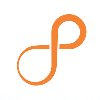Filter interviews by
KHVatec Interview Questions and Answers
KHVatec Interview Experiences
6 interviews found

(2 Questions)
- Q1. Die casting and press maintenance must be strong point
- Q2. Auto cad knowledge is extra advantage
(2 Questions)
- Q1. Expected salary
- Q2. Hike 15 percent
Interview Preparation Tips
Maintenance Manager Interview Questions asked at other Companies
I applied via Approached by Company and was interviewed in Jul 2022. There were 2 interview rounds.

(1 Question)
- Q1. Interview not hard simple interviews questions basic question but English is very necessary due to Korean culture
Interview Preparation Tips
Tool Room Technician Interview Questions asked at other Companies
I applied via Referral and was interviewed in Aug 2021. There were 4 interview rounds.
Interview Questionnaire
1 Question
- Q1. Technical questions baaic
Interview Preparation Tips
Engineer Interview Questions asked at other Companies
I applied via Naukri.com and was interviewed in Mar 2021. There were 4 interview rounds.
Interview Questionnaire
1 Question
- Q1. Related to course field
Interview Preparation Tips
Company Secretary Interview Questions asked at other Companies
KHVatec interview questions for popular designations
Interview Questionnaire
1 Question
- Q1. CNC and vmc 2d programming and g code
Junior Engineer Interview Questions asked at other Companies
Executive/ Sr Executive - Administration Interview Questions & Answers
posted on 5 Feb 2021
Interview Questionnaire
1 Question
- Q1. What is your experience in Solar energy power system
- Ans.
I have experience in managing and maintaining solar power systems for commercial and residential buildings.
Managed installation and maintenance of solar panels for a commercial building
Implemented energy-saving measures through solar power for a residential complex
Conducted regular inspections and repairs to ensure optimal performance of solar power systems
Collaborated with vendors and contractors to source high-qualit...
Interview Preparation Tips
Executive/ Sr Executive - Administration Interview Questions asked at other Companies
Jobs at KHVatec
Top trending discussions






Interview questions from similar companies

Senior Software Engineer Interview Questions & Answers
Tech Mahindraposted on 14 May 2022
I applied via Naukri.com and was interviewed before May 2021. There was 1 interview round.
(1 Question)
- Q1. Discuss 4 case study related to supply chain management.
Interview Preparation Tips
- Supply Chain Management

I applied via Walk-in and was interviewed before Apr 2020. There were 5 interview rounds.
Interview Questionnaire
1 Question
- Q1. What is Excel what is vlookup what is your strength and weakness
Interview Preparation Tips

I was interviewed before Sep 2020.
(1 Question)
Round duration - 140 minutes
Round difficulty - Medium
Test timing was at 2:00 pm , it was conducted in a college and the environment was good for the test. Camera was a primary part of test, so no suspicious activity.
- Q1.
Sum of Two Numbers Represented as Arrays
Given two numbers in the form of two arrays where each element of the array represents a digit, calculate the sum of these two numbers and return this sum as an ar...
- Ans.
Given two numbers represented as arrays, calculate their sum and return the result as an array.
Iterate through the arrays from right to left, adding digits and carrying over if necessary
Handle cases where one array is longer than the other by considering the remaining digits
Ensure the final sum array does not have any leading zeros
Round duration - 20 minutes
Round difficulty - Easy
The round was conducted at around 12 p.m. I was called at the college location and then it was conducted. The interviewer was quite polite and frank.
Round duration - 8 minutes
Round difficulty - Easy
This round was conducted right after finishing and clearing the technical round at the same place and on the same day.
Interview Preparation Tips
Tip 1 : Practice atleast 2-3 Coding problems daily so your logic building becomes stronger.
Tip 2 : Exercise problems based on OOPS concepts and others too.
Tip 3 : If you can have your own project built, then it's the major point and will act as a plus point.
Tip 1 : Your resume should be in standard form, short and simple will be more effective.
Tip 2 : Whatever you have learned, you need to mention it in your resume as that will be your primary source of selection and having project on your resume is important.
Skills evaluated in this interview

I applied via Naukri.com and was interviewed in Jul 2020. There were 4 interview rounds.
Interview Questionnaire
1 Question
- Q1. SOLID principals, oops, c# basics, SQL server, azure, design pattern
Interview Preparation Tips
KHVatec Interview FAQs
Recently Viewed
Tell us how to improve this page.
KHVatec Interviews By Designations
Interview Questions for Popular Designations
- Senior Executive Interview Questions
- Design Engineer Interview Questions
- Senior Associate Interview Questions
- Senior Engineer Interview Questions
- Consultant Interview Questions
- Associate Software Engineer Interview Questions
- Accountant Interview Questions
- System Engineer Interview Questions
- Show more
KHVatec Interview Process
based on 2 interviews
Interview experience
Interview Questions from Similar Companies
|
Junior Engineer
35
salaries
| ₹0 L/yr - ₹0 L/yr |
|
Assistant Manager
22
salaries
| ₹0 L/yr - ₹0 L/yr |
|
Senior Engineer
21
salaries
| ₹0 L/yr - ₹0 L/yr |
|
Engineer
19
salaries
| ₹0 L/yr - ₹0 L/yr |
|
Assistant Engineer
15
salaries
| ₹0 L/yr - ₹0 L/yr |

TCS

Infosys

Wipro

HCLTech
- Home >
- Interviews >
- KHVatec Interview Questions









